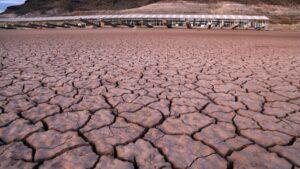
Photo Credit: ABC15
Arizona’s water crisis has reached a tipping point, and Scottsdale’s recent experiences serve as a stark preview of what may await the entire state. As the Colorado River continues its relentless decline through more than two decades of drought, Arizona faces an increasingly precarious water future that demands immediate attention and long-term strategic planning.
The Numbers Don’t Lie: Arizona will again face an 18% reduction in its Colorado River allocation in 2026, representing a 512,000 acre-foot reduction that constitutes 30% of the Central Arizona Project’s normal supply. This isn’t just a temporary setback—it’s becoming the new normal. As of July 2025, approximately 95% of Arizona remains under drought conditions, with the worst drought conditions concentrated in New Mexico and Arizona.
Scottsdale’s proactive drought management offers both a warning and a roadmap. The city has implemented a stage one drought management plan with a goal of cutting water use by 5%, successfully saving about a million gallons of water in just three days through innovative measures. Yet even these efforts underscore the severity of the situation—when a relatively affluent city like Scottsdale must implement emergency conservation measures, it signals broader systemic challenges ahead.
Beyond the Immediate Crisis, the implications extend far beyond current shortages. Long-term drought and climate change mean less Colorado River water will be available to Arizona indefinitely, forcing communities to confront fundamental questions about growth, development, and resource allocation. Recent forecasts showing only 50% of average inflow into Lake Powell indicate the basin is entering dangerous territory, suggesting current conservation efforts may be insufficient.
With the period from July 2020 to June 2025 ranking as the 5th warmest and 4th driest on record, some amount of Exceptional long-term drought has remained in every Arizona county. This persistent pattern indicates that Arizona’s water challenges aren’t cyclical shortages but represent a fundamental shift requiring transformative solutions.
Scottsdale’s experience illuminates both the urgency and the possibility of adaptation. While residents within Scottsdale city limits face no immediate changes, this stability depends on continued aggressive conservation and diversification efforts. The city’s approach—combining immediate conservation measures with long-term planning—provides a template other Arizona communities must rapidly adopt.
Arizona’s water future depends on treating Scottsdale’s experience not as an isolated case study, but as a canary in the coalmine. The state must accelerate investment in alternative water sources, implement comprehensive conservation programs, and fundamentally rethink growth patterns in an era of permanent scarcity. The question isn’t whether Arizona will face more severe water restrictions—it’s whether communities will prepare proactively or wait until crisis forces their hand.

